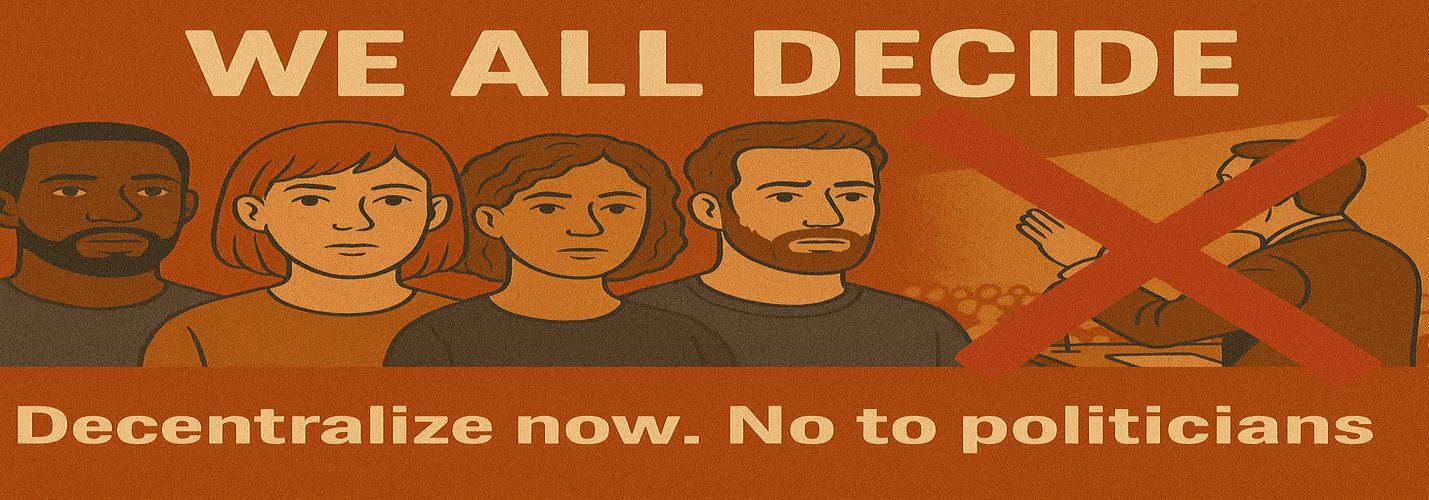This article takes a looks at what theoretical models for Direct Democracy exist already in the United States. It’s generated by AI from Google. The models have been created by anti Direct Democracy proponents, since the arguments focus on perception of what they might see as negative aspects to Direct Democracy. For each of the risk factors identified below, there are ways to mitigate risk, such as the way Switzerland has had implemented for generations. But lets take a look and see..
The Theoretical Frameworks of Direct Democracy in the United States
The idea of a full-scale direct democracy in the United States, where citizens vote on all laws and policies, is a theoretical concept. Political scientists and economists have developed several models to analyze what might happen if such a system were implemented. These frameworks generally explore the trade-offs between a government that is more responsive to the public and potential issues like policy instability and the protection of minority rights. The following sections detail the primary models that have been developed.
1. The Median Voter Theorem
This classic model from political science suggests that in a direct democracy, policy outcomes would gravitate toward the preferences of the median voter—the person whose political views fall exactly in the middle of all voters. The theory predicts that policies would be highly representative of the majority’s will, as politicians or ballot initiatives would need to appeal to this central voter to win.
- Predicted Outcome: A government that is highly congruent with the majority’s preferences and less influenced by special interests at the ideological extremes.
- Critiques: The model is criticized for being overly simplistic. It assumes voters are well-informed and their preferences can be arranged along a single ideological spectrum. It also fails to account for the potential for a “tyranny of the majority,” where the majority’s preferences could infringe upon the rights of a minority.
2. The Public Choice Model
This framework, which draws on economic principles, views direct democracy as a marketplace where various self-interested groups compete for influence. It focuses on the role of special interest groups and the potential for a wealthy minority to manipulate the system.
- Predicted Outcome: Direct democracy would likely be dominated by well-funded interest groups. These groups could finance expensive advertising campaigns and craft complex, misleading ballot initiatives to serve their own agendas. The average citizen, lacking the resources and time to research every issue, would be susceptible to these campaigns.
- Critiques: While this model’s predictions are supported by evidence from state-level ballot initiatives, it can be seen as cynical. It may underestimate the public’s ability to discern deceptive campaigns and the impact of grassroots movements.
3. The Participatory Democracy Model
This more idealistic framework argues that direct democracy would have a positive, transformative effect on civic life. It suggests that giving citizens a direct voice in policymaking would lead to a more engaged and informed electorate.
- Predicted Outcome: Citizens would become more knowledgeable about political issues, leading to increased voter turnout and political participation. This enhanced civic engagement would, in turn, result in better-quality policies and a stronger sense of community.
- Critiques: Empirical evidence on state-level initiatives offers mixed support for this model. While some studies show a modest increase in voter turnout, the effect on long-term political knowledge and engagement is often minimal. The model also doesn’t account for the complexity of many policy issues, which may be beyond the average voter’s expertise.
4. Hybrid Models and Their Implications
Many modern theoretical frameworks combine elements of the above models to provide a more nuanced perspective. They view direct democracy not as a singular system, but as a set of tools (initiatives, referendums, recalls) that operate within a larger representative framework.
- Predicted Outcome: Direct democracy could act as a crucial check on legislative gridlock. It could allow citizens to bypass an unresponsive legislature and pass popular reforms. However, these tools could also be exploited by special interests, leading to a fragmented and contradictory policy landscape. The ultimate outcome would heavily depend on the specific rules governing these processes.
- Summary: A full-scale direct democracy in the U.S. remains a theoretical construct. Academic models suggest that while it could lead to a more responsive and engaged government, it also presents significant challenges related to policy stability, the protection of minority rights, and the potential for manipulation by well-funded interest groups.
Is your area run democratically by the people? Or by politicians? Are you interested in people empowerment for democracy in your area?
Leave us your details, we will be in touch.
